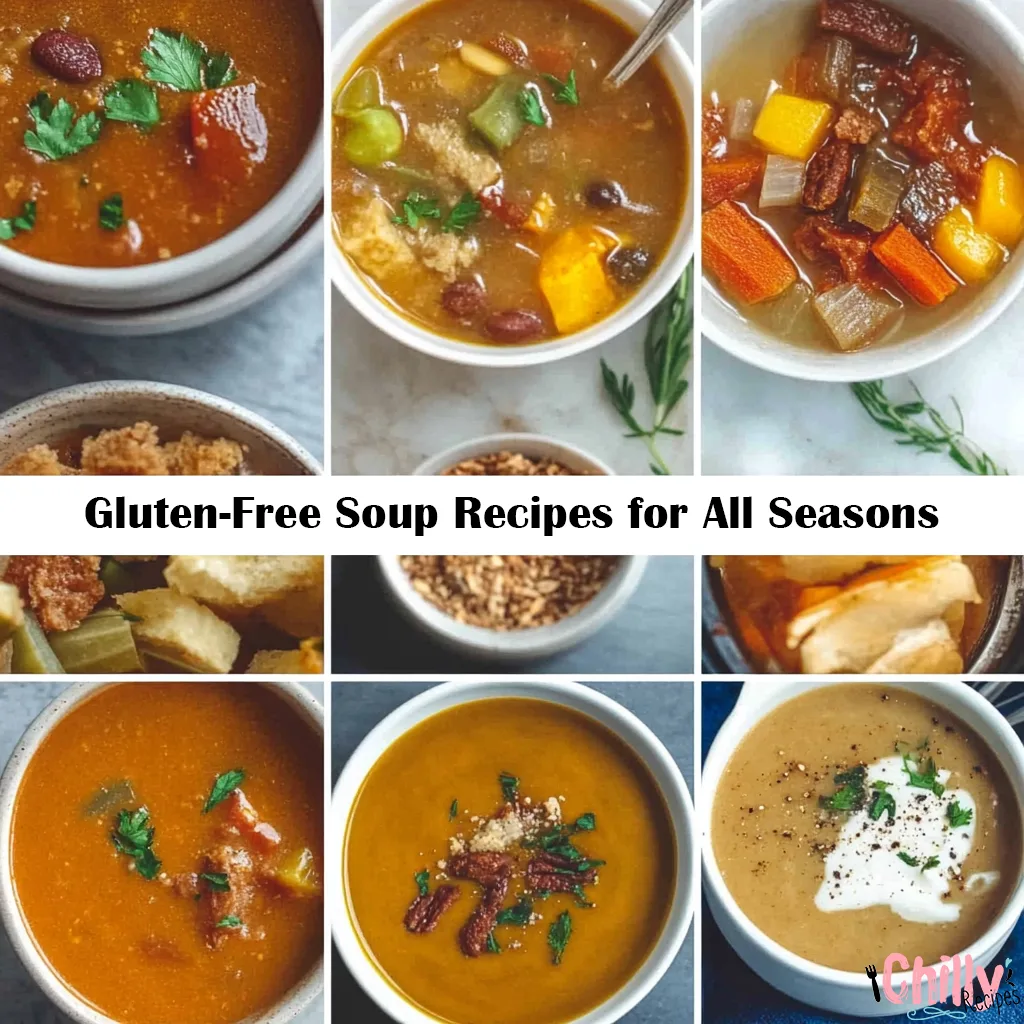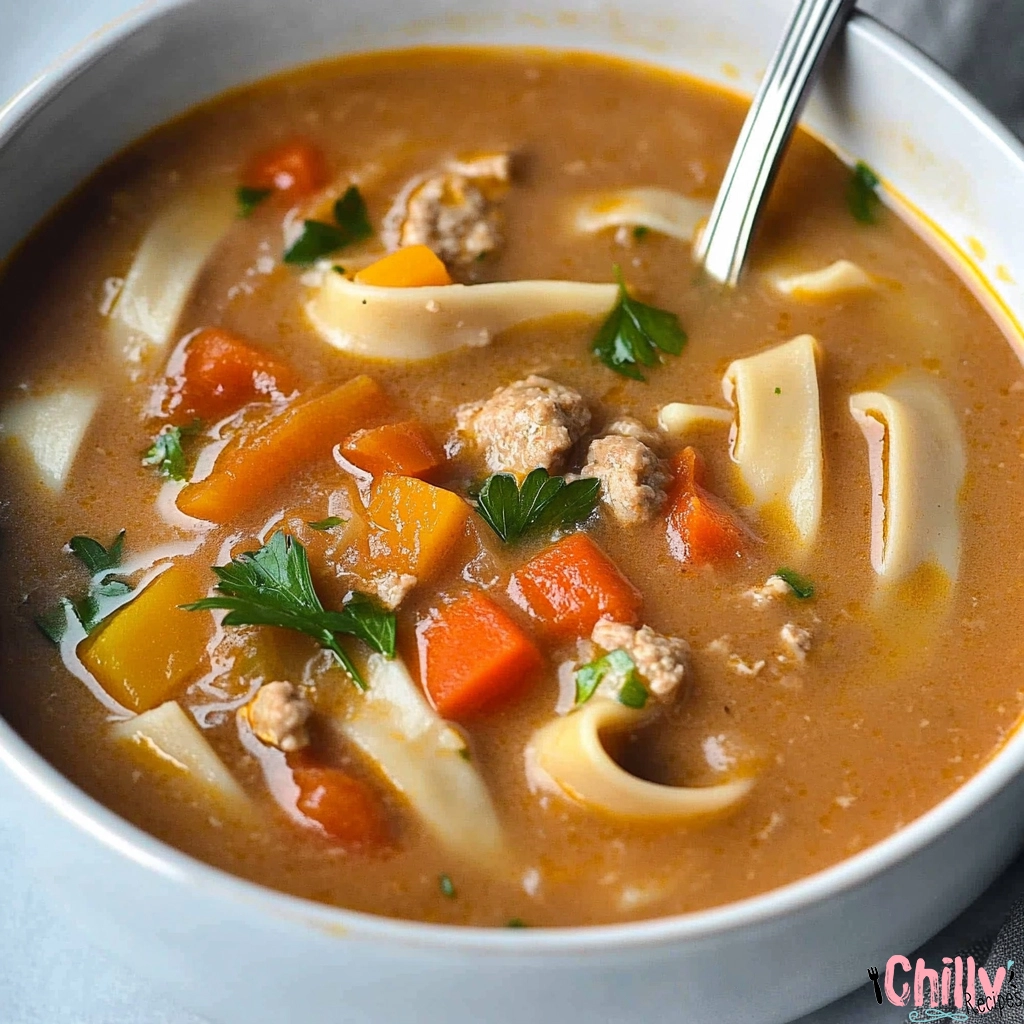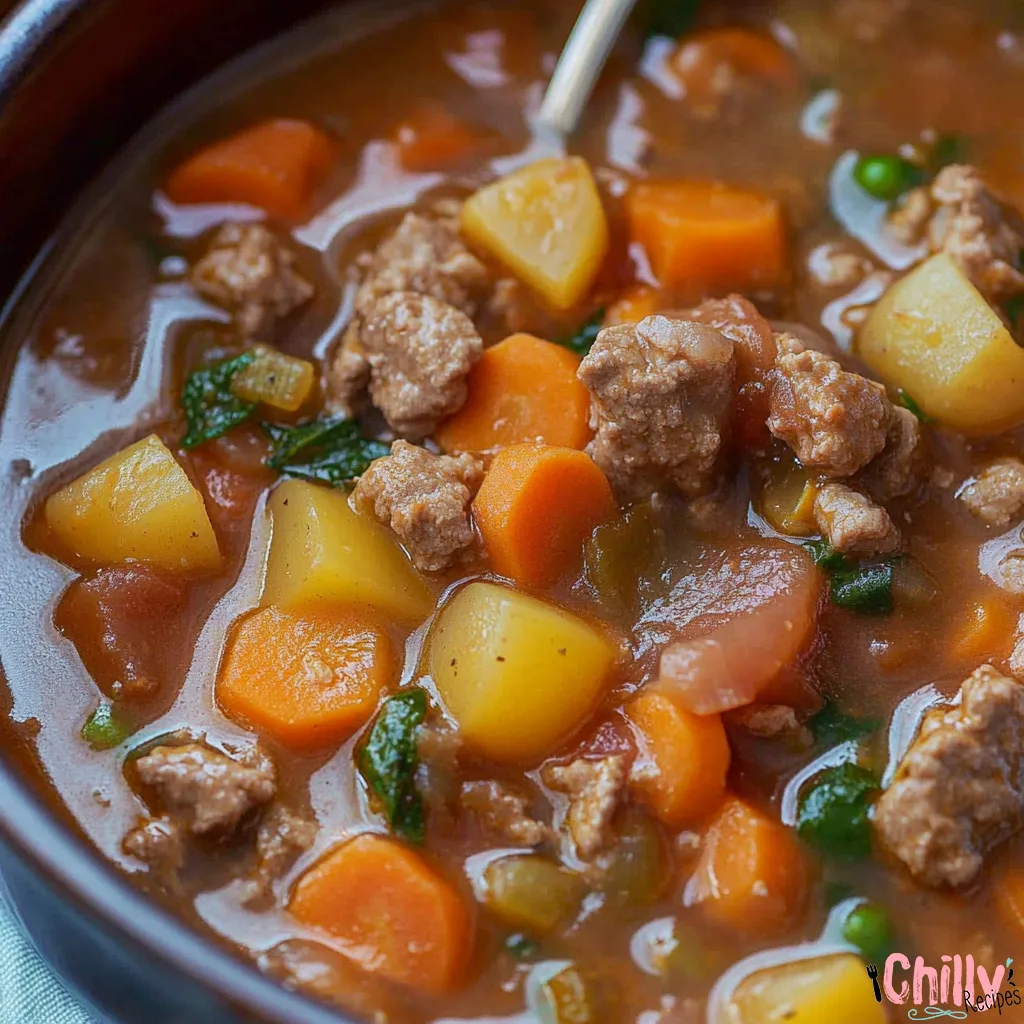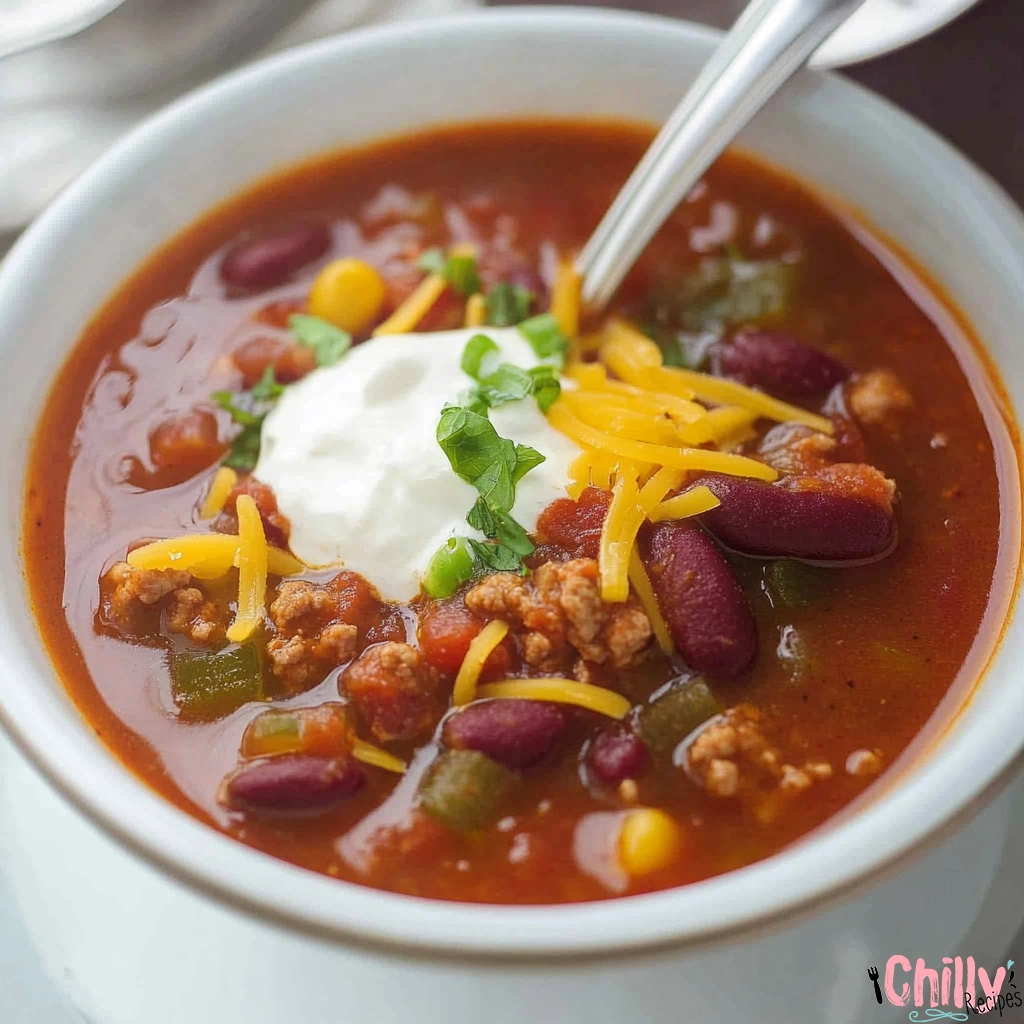Table of contents
- Introduction to Gluten-Free Soups
- Understanding Gluten-Free Soup Basics
- Essential Kitchen Tools for Making Gluten Free Soup
- Spring Gluten-Free Soup Recipes
- Hearty Summer Soup Creations
- Warming Fall Soup Selections
- Best Winter Gluten-Free Soups
- Safe Ingredients and Smart Substitutions
- Storage and Freezing Tips
- Meal Prep Strategies for Your Gluten-Free Soups
- Troubleshooting Common Gluten-Free Soup Issues
- Conclusion: Embracing the Art of Gluten-Free Soup Making
- FAQ
- What makes a soup gluten-free?
- What common ingredients should I avoid in gluten-free soups?
- What are some essential kitchen tools for making gluten-free soups?
- How can I ensure my gluten-free soups are safe to eat?
- What are some tips for storing and freezing gluten-free soups?
- How can I meal prep my gluten-free soups for the week?
- How can I troubleshoot common issues with my gluten-free soups?
Exploring gluten-free ingredients opens up a world of healthy eating options. You can make tasty and nutritious soups for every season with the right ingredients.
Gluten-free ingredients are key to a healthy lifestyle. They let you enjoy a variety of flavors and textures in your soups. Whether you want a light soup or a hearty one, gluten-free ingredients can help.

This guide will teach you to use gluten-free ingredients wisely. You’ll learn cooking techniques and meal prep strategies. This way, you can make delicious gluten-free soups that you’ll love.
Introduction to Gluten-Free Soups
This article is your complete guide to gluten-free soups. You’ll learn why gluten-free ingredients are important and how to use them in your soups. This will help you eat healthy and enjoy it.
Key Takeaways
- Gluten-free ingredients are essential for healthy eating and can be used to make a variety of delicious soups.
- Gluten-free soups can be made using a range of ingredients, including vegetables, lean proteins, and whole grains.
- Healthy eating habits can be achieved by incorporating gluten-free ingredients into your diet.
- Gluten-free soups can be tailored to suit your tastes and preferences, from light and refreshing to hearty and comforting.
- With the right gluten-free ingredients and cooking techniques, you can create nutritious and delicious soups that cater to your dietary needs.
- Meal prep strategies can help you make the most of your gluten-free soups and maintain a balanced diet.
Understanding Gluten-Free Soup Basics
Gluten-free soup making is key for tasty, safe meals on a gluten-free diet. Knowing the basics of gluten-free cooking is crucial. This means avoiding gluten and finding gluten-free alternatives. A gluten-free diet needs careful planning to ensure all ingredients are safe.
Ingredients like wheat, barley, and rye must be avoided in soups. These can be hidden in broths and some veggies. By watching out for these, you can make a gluten-free soup that’s both healthy and tasty. Gluten-free thickeners like cornstarch and coconut flour help get the right soup consistency.
Here are some key points to consider when making gluten-free soups:
- Always read labels to ensure that the ingredients you’re using are gluten-free
- Be aware of cross-contamination with gluten-containing ingredients
- Experiment with different gluten-free thickeners to find the one that works best for you
By following these tips and using the right gluten-free ingredients, you can make many delicious, healthy soups. Whether you want a comforting meal or a light soup, the right techniques are essential.
| Gluten-Free Ingredient | Description |
|---|---|
| Cornstarch | A common thickener used in many gluten-free soups |
| Tapioca Flour | A gluten-free flour made from cassava root |
| Coconut Flour | A gluten-free flour made from dried coconut |
Essential Kitchen Tools for Making Gluten Free Soup
To make delicious gluten-free soups, you need the right kitchen tools. Having a well-stocked kitchen is key. You’ll need pots, pans, utensils, and appliances to prepare and cook your soups.
A slow cooker, blender, and food processor are must-haves. They help you cook your soups efficiently. For instance, a slow cooker cooks soups slowly, and a blender purees them to the right consistency.
Here are some essential kitchen tools you may need:
- Large pot for boiling vegetables and meat
- Slow cooker for cooking soups over low heat
- Blender for pureeing soups
- Food processor for chopping vegetables and meat
- Utensils such as spoons, spatulas, and whisks
You’ll also need basic cooking essentials like olive oil, salt, and pepper. With these tools and essentials, you can make many delicious gluten-free soups. Choose high-quality tools that are easy to clean and maintain.
| Kitchen Tool | Description |
|---|---|
| Slow Cooker | Cooks soups over low heat for a long period |
| Blender | Purees soups to the desired consistency |
| Food Processor | Chops vegetables and meat |
Spring Gluten-Free Soup Recipes
As the weather gets warmer, it’s time to enjoy light and refreshing gluten-free soups. These recipes highlight the flavors of spring. They are perfect for the season, filled with delicious and healthy ingredients.
These soups are not just tasty but also easy to make. You can customize them to fit your taste. They include a mix of vegetable-based soups and creamy ones with fresh herbs and spices.
- Light Vegetable Minestrone: a hearty and flavorful soup made with a variety of vegetables, including tomatoes, zucchini, and carrots.
- Asparagus and Leek Soup: a creamy and delicious soup made with fresh asparagus and leeks, and a touch of garlic and lemon juice.
- Fresh Pea and Mint Soup: a refreshing and light soup made with fresh peas, mint, and a hint of cream.
These recipes are great for spring and will be a hit in your gluten-free diet. Try them out and enjoy the fresh flavors of spring in a warm bowl of soup.
Hearty Summer Soup Creations
Summer soups might seem like a bad idea for hot weather. But, there are many tasty and cool gluten-free soup options for summer. You can make your own hearty summer soup creations with gluten-free ingredients like veggies, lean proteins, and herbs.
Some great summer soups include:
- Cold soups like gazpacho or cucumber soup
- Light and refreshing soups like chicken or vegetable broth
- Spicy soups like black bean or corn soup
You can add gluten-free ingredients like quinoa, brown rice, or gluten-free noodles to your soups. This makes them more filling and tasty. Also, try different herbs and spices to make your soups unique.
With gluten-free ingredients and creative recipes, you can enjoy many summer soups that are both healthy and delicious. So, start making your hearty summer soup creations today!
| Soup | Gluten-Free Ingredients | Flavor Profile |
|---|---|---|
| Cold Gazpacho | Gluten-free bread, vegetables, tomatoes | Refreshing, tangy |
| Black Bean Soup | Gluten-free noodles, black beans, spices | Spicy, savory |
Warming Fall Soup Selections
As the weather gets cooler, it’s time to enjoy warm, comforting gluten-free soups. These soups highlight the tastes of fall. Try mixing butternut squash, mushrooms, and root vegetables for tasty, hearty soups.
Some favorite fall soups are:
- Butternut Squash Bisque: a creamy soup with roasted butternut squash and onions.
- Mushroom and Wild Rice Soup: a savory soup with sautéed mushrooms and wild rice.
- Roasted Root Vegetable Soup: a vibrant soup with roasted root vegetables.
Learning these soup making techniques lets you make many fall soups. You can find a gluten-free soup recipe for any craving. Whether you want something creamy or savory, there’s a soup for you.
With practice and trying new things, you’ll get great at making fall soups. These soups will warm your heart and belly. So, start making gluten-free soups today!
Best Winter Gluten-Free Soups
As winter gets colder, a warm bowl of gluten-free soup is perfect. It’s great for your body and soul. You can make your own using veggies, lean proteins, and whole grains.
Some popular winter soups that are naturally gluten-free include:
- Butternut squash soup, made with roasted squash and onions
- Lentil soup, made with red or green lentils and vegetables
- Chicken and rice soup, made with lean chicken and gluten-free rice
When making winter soups, use gluten-free ingredients. Be careful not to mix them with gluten. You can also try different spices and seasonings to add flavor without gluten. Healthy eating means making smart choices, like choosing gluten-free.

Adding winter soups to your diet keeps you warm and cozy. It also helps you eat healthier. With a bit of creativity, you can make tasty and comforting gluten-free soups for your family.
| Soup | Ingredients | Gluten-Free |
|---|---|---|
| Butternut Squash Soup | Roasted squash, onions, garlic | Yes |
| Lentil Soup | Red or green lentils, vegetables | Yes |
| Chicken and Rice Soup | Lean chicken, gluten-free rice | Yes |
Safe Ingredients and Smart Substitutions
When cooking gluten-free soups, it’s key to use safe ingredients. Start by picking gluten-free stock from your local supermarket. Choose brands that focus on gluten-free products to avoid contamination.
For thickening, try arrowroot powder or tapioca starch. They’re gluten-free and add a special texture. For flavor, use herbs and spices like basil, oregano, or cumin. They’re naturally gluten-free.
Here are some meal prep ideas to get you started:
- Prepare a large batch of gluten-free stock on the weekend and use it throughout the week
- Roast a variety of vegetables and store them in the fridge for up to 3 days
- Make a big batch of soup on Sunday and portion it out into individual containers for easy reheating
By using safe ingredients and smart substitutions, you can make many gluten-free soups. These soups are not only tasty but also fit your dietary needs. Always check labels and choose trusted brands to ensure your soups are safe.
With a bit of creativity and planning, you can enjoy many gluten-free soups. They’re both nourishing and delicious. Whether you need a quick meal or a hearty soup for a cold day, there are endless options.
| Gluten-Free Ingredient | Description |
|---|---|
| Gluten-free stock | A stock made from gluten-free ingredients, such as vegetables, meats, and spices |
| Arrowroot powder | A natural thickening agent made from the root of the arrowroot plant |
| Tapioca starch | A natural thickening agent made from the root of the cassava plant |
Storage and Freezing Tips
Keeping your gluten-free soups fresh and safe is key. Proper storage and freezing are crucial. These tips will help your soups stay good for longer. It’s important to think about how to keep the flavor and texture right for a gluten-free diet.
First, cool your soups down to room temperature before putting them in the fridge or freezer. This stops bacteria from growing and keeps your soups fresh. You can store them in airtight containers in the fridge for up to three days or freeze for up to three months. Freezing in ice cube trays is a great way to freeze individual portions for easy reheating.
Some important things to remember for storing and freezing include:
- Labeling and dating your containers so you can easily keep track of how long they’ve been stored
- Using airtight, freezer-safe containers to prevent freezer burn and other forms of damage
- Freezing your soups in portions that are easy to thaw and reheat, such as individual servings or small batches
By following these tips, you can enjoy your gluten-free soups for a longer time. They will stay fresh and safe. Always check your soups for spoilage before eating. Reheat them to 165°F (74°C) to ensure they are safe to eat.

With these tips, you can store and freeze your gluten-free soups confidently. They will stay fresh and nutritious for a longer time. This is great for those on a gluten-free diet, as it helps with meal planning and preparation.
| Storage Method | Shelf Life | Considerations |
|---|---|---|
| Refrigeration | Up to 3 days | Cool soup to room temperature before refrigerating |
| Freezing | Up to 3 months | Use airtight, freezer-safe containers and label with date |
Meal Prep Strategies for Your Gluten-Free Soups
Meal prep is key for a healthy diet. Preparing your gluten-free soups ahead of time ensures you have nutritious meals all week. It saves time and reduces waste, perfect for those with busy lives.
To start, gather your cooking essentials like pots, pans, and containers. The right tools make meal prep easier and more fun. Look into different strategies, like portioning and reheating, to find what suits you best.
Weekly Prep Guidelines
Choose a day each week for meal prep. It could be Sunday or any day that fits your schedule. Use this time to make a big batch of soup and divide it into containers for the week.
Portioning and Storage Containers
Use airtight containers to keep your soups fresh and prevent contamination. Label and date each container for easy fridge or freezer tracking.
Reheating Methods
Reheating your soups is a key part of meal prep. You can use a microwave, stove, or oven. Remember, some soups might need more liquid or seasoning when reheated.
By using meal prep strategies, you can enjoy healthy gluten-free soups all week. It simplifies your cooking and saves you time.
Troubleshooting Common Gluten-Free Soup Issues
When making gluten-free soups, you might face problems like thickening issues, flavor imbalances, and texture problems. To fix these, it’s key to know the basics of troubleshooting and use good soup making techniques. First, find out what’s causing the problem. It could be a bad ingredient or a cooking mistake.
One common problem is getting the soup’s consistency right. You can add gluten-free thickeners like cornstarch, tapioca flour, or coconut flour. Or, let the soup simmer longer to thicken it naturally. These troubleshooting steps can help you make a tasty gluten-free soup.
Here are some tips for solving common gluten-free soup problems:
- Use a variety of gluten-free ingredients to add depth and complexity to your soups.
- Experiment with different soup making techniques, such as roasting or sautéing, to enhance the flavor and texture of your soups.
- Don’t be afraid to try new ingredients and flavor combinations to create unique and delicious gluten-free soups.
By following these tips and using effective troubleshooting methods, you can make many tasty gluten-free soups. Always use fresh, high-quality ingredients. And don’t hesitate to experiment and try new things. With practice and patience, you’ll become great at making gluten-free soups and enjoy their health benefits.
Conclusion: Embracing the Art of Gluten-Free Soup Making

As you finish exploring these gluten-free soup recipes, start making nourishing and tasty soups. The secret to great gluten-free soups is using the right ingredients and trying new things. This opens up a world of exciting flavors.
Use healthy, naturally gluten-free ingredients and try different thickeners. This way, you can make soups that are not just yummy but also good for you. Don’t be afraid to try new things, use fresh ingredients, and let your creativity flow.
Enjoy every step of making soup, from the smells to the first taste. Remember, making gluten-free soups is not just about the food. It’s about the fun and joy of creating something special. Let your love for healthy, tasty soups guide you in your cooking journey.
FAQ
What makes a soup gluten-free?
To make a soup gluten-free, use ingredients without gluten. This includes gluten-free broth, veggies, proteins, and thickeners like cornstarch or coconut flour.
What common ingredients should I avoid in gluten-free soups?
Avoid gluten in soups by steering clear of wheat flour, breadcrumbs, soy sauce, and some broths. Always check labels for gluten-free options.
What are some essential kitchen tools for making gluten-free soups?
Key tools for gluten-free soups include a good pot, blender, ladle, and utensils. A slow cooker is also great for simmering flavors.
How can I ensure my gluten-free soups are safe to eat?
Ensure your soups are safe by choosing gluten-free ingredients and broth. Be careful not to cross-contaminate. Know safe thickeners and seasonings for a gluten-free diet.
What are some tips for storing and freezing gluten-free soups?
Cool soups before storing them in airtight containers or bags. Reheat them well to keep them safe and tasty. Good storage and freezing can extend their life.
How can I meal prep my gluten-free soups for the week?
Plan your soup recipes for the week. Portion them out for easy meals. Store them in the fridge or freezer for a quick, healthy meal.
How can I troubleshoot common issues with my gluten-free soups?
For common soup problems, like thickening or flavor, try adjusting ingredients or cooking methods. This can help you get the perfect soup.

